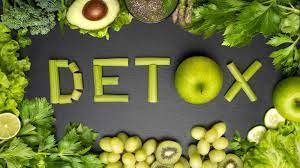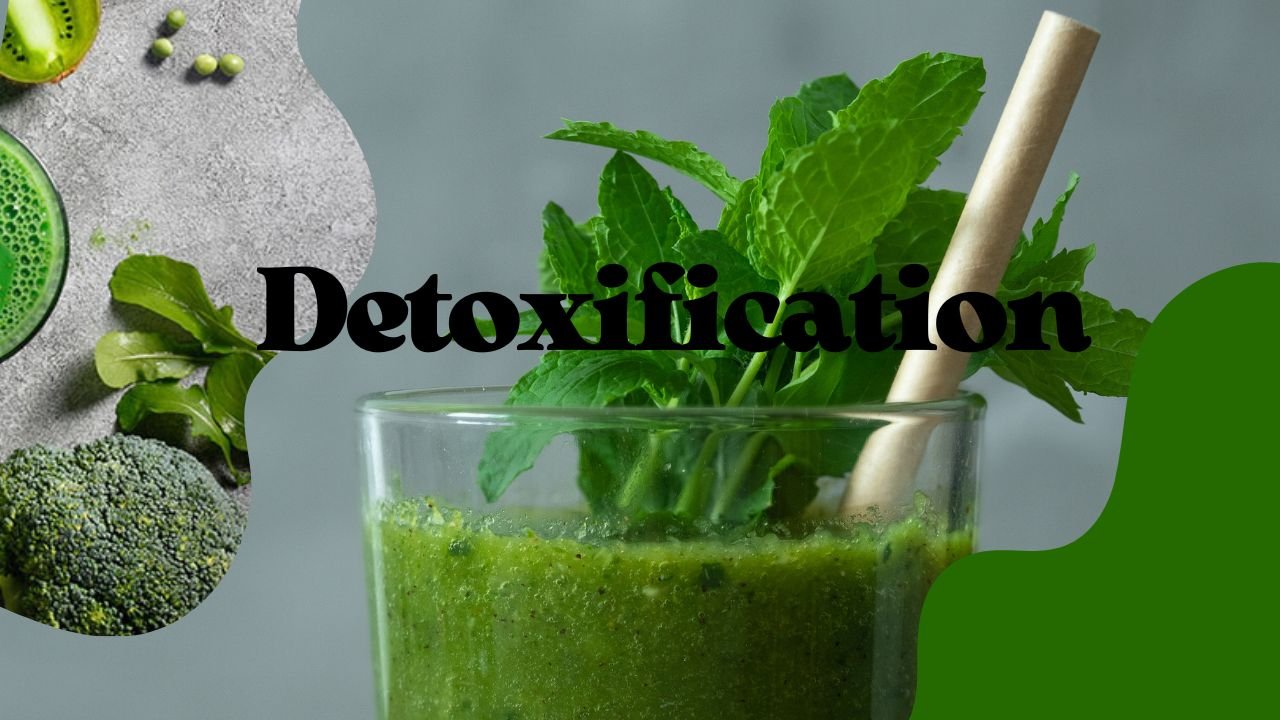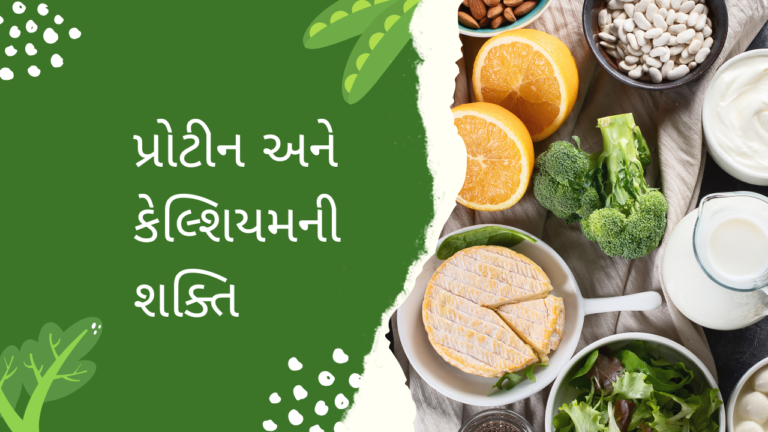Detoxification
We ingest toxins from five main sources on a regular basis: food, water, cosmetics, personal care products, the environment, and negative thoughts. It’s crucial to periodically detox your body to avoid unneeded physical and health issues like headaches, insomnia, illnesses, chronic fatigue, etc. Your immune system will benefit from detoxing, and you’ll be able to focus and sleep better. Your body quickly adapts to your decision to detoxify it and gets better on its own.
What is Detoxification?
The removal of toxic substances through physiological or medicinal means from a living organism, including the human body, is known as detoxification or detoxication (detox for short).
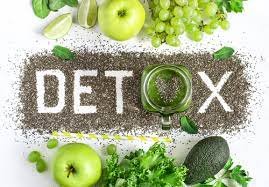
In addition, it can be used to describe the period of drug withdrawal that occurs after a long-term addiction to a substance, during which the body returns to homeostasis. Decontamination of poison consumption, the use of antidotes, as well as procedures like dialysis and (in a small number of cases) chelation therapy, are all ways that detoxification can be accomplished in medicine.
Various forms of detoxification, including detoxification diets, are widely promoted by practitioners of alternative medicine.
Detoxification, to put it simply, is a process that helps your body rid itself of poisonous or harmful substances.
There are 5 organs involved in detoxification, such as:
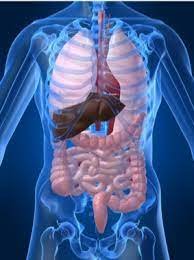
- The liver
- The colon
- The lungs
- The kidneys
- And the skin
When it comes to detoxification, the liver frequently receives a lot of attention, and for good reason. Waste materials and toxins can be converted by the liver into water-soluble molecules, which can then be expelled from the body through the bowel, urine, breathing, or sweating.
Why Detoxification is important?
Nearly all of us aspire to have a healthy mind, a trim, fit body, and soft, supple skin. It is essential to adhere to a structured workout routine and a nutritionally balanced diet in order to achieve the same results.
However, it is crucial to detox the body with a suitable cleansing process first in order to release dangerous toxins from the body. Most of us struggle to adhere to various detoxification programmes because of our hectic work schedules.
Phases of Detoxification:
Phase I: To facilitate the elimination process, the liver reduces complex components like lipid-soluble molecules to less harmful toxins. Cytochrome-450 is reduced by a group of enzymes that carry out a number of chemical reactions, including oxidation, reduction, hydration, dehalogenation, and hydrolysis.
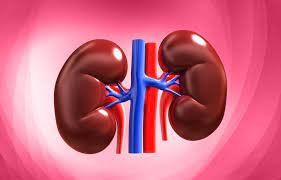
Numerous nutrients, including flavonoids, vitamin A, vitamin B, vitamin C, amino acids, and zinc, are needed to support this enzymatic activity. As they are absorbed by the body, these nutrients aid in the neutralisation of free radicals that are produced as a by-product. They play a major role in how well the detoxification process works.
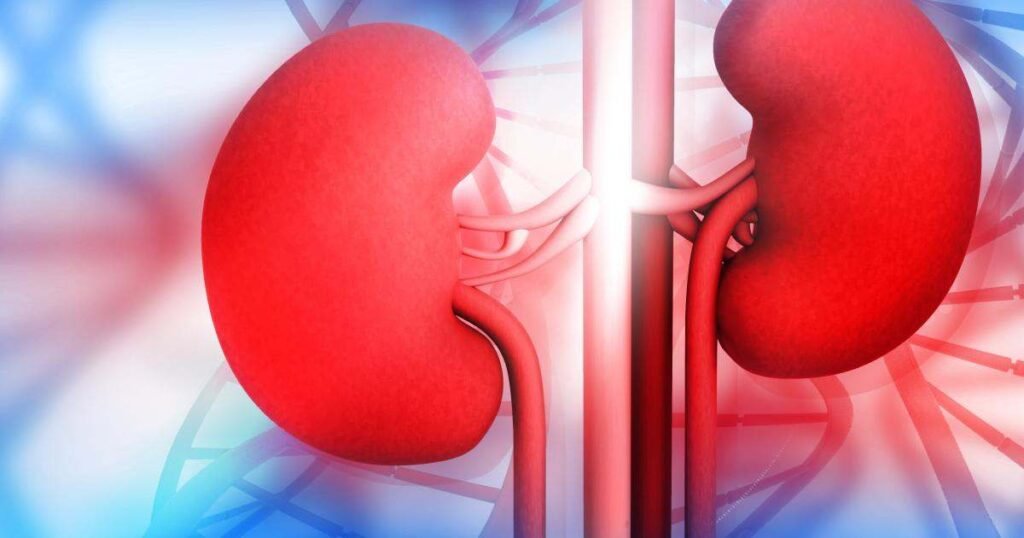
Phase II: In addition to being less harmful, the by-product is made water soluble. Water-soluble substances are conveniently eliminated in the kidneys through urine and faeces.
Signs that you need Detoxification:
You must think about undergoing a detox if you respond positively to any of the following questions.
- Do you feel less healthy or energetic than people your age?
- Are you experiencing low energy?
- Do you frequently struggle with clarity of thought?
- Do you experience depression or low mood frequently?
- Do you experience multiple colds each year? (Or different illnesses)
- Have you been diagnosed with uterine fibroids, fibrocystic breast tissue, or PMS?
- Do you experience random aches and pains?
- Do you have bad breath or stinky stools?
- Do you pass less than one bowel movement each day?
Home Remedies/Natural Ways to Detox:
Do you nudge your coffee with a side of breakfast burritos? Even though you might adore these delectable treats, they aren’t exactly your body’s best friend. They might make you feel exhausted and listless.
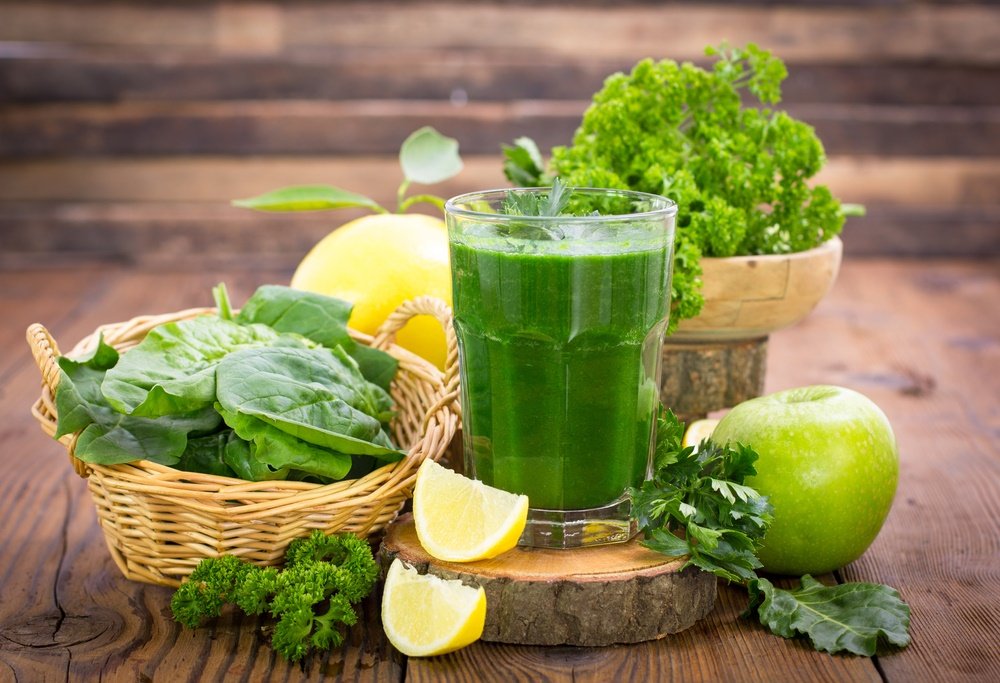
To be able to rid your body of toxins, you do need to boost your energy levels. Foods alone, though, do not wholly detox your body. Other lifestyle adjustments may be beneficial.
- Drink warm water mixed with lemon juice first.
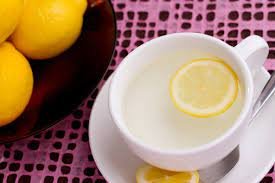
Have a glass of warm water with freshly squeezed lemon to start your day. The possibility exists for a wonderful combination to remove toxins from the body. For even better results, you can also add grated ginger to the same recipe.
Together, lemon and ginger enhance digestion and speed up the metabolism. This drink is simple to make and takes no more than two to three minutes. For a successful body detox, make sure you’re consuming it on an empty stomach. One of the best natural body detox remedies is this.
- Cut out sugary foods
Regular consumption of sugary foods can harm your liver and kidneys, which can obstruct your body’s detoxification process.

According to a study in the European Journal of Nutrition, eating a lot of sugary foods can also result in fatty liver. It has also been connected to a higher risk of diabetes and obesity
- Skip the alcohol

Did you know that alcohol can interfere with your liver’s ability to function normally? Excessive drinking can result in a build-up of fat in your body and can also trigger inflammation, according to a study published in Stat Pearls.
Your liver function may be harmed by all of this. Although abstaining would be ideal, consuming alcohol in moderation can be somewhat helpful.
- Reduce your caffeine intake.
Caffeine is bad for your body, so coffee lovers won’t like it. High levels of caffeine in coffee, according to studies, can obstruct the body’s natural detoxification process.

It can make it difficult for the body to control the natural detoxification process in the liver, which can cause several issues.
- Regular Exercise

It should go without saying that regular exercise is beneficial for your health. In fact, studies have shown that exercise lowers the risk of a number of diseases, such as heart disease, high blood pressure, diabetes, etc.
- Avoid packaged juices/foods
Preservatives, flavour enhancers, colouring agents, and processed sugar may be present in packaged fruit juices. Your general health may be negatively impacted by all of these factors.

Instead, detoxify with freshly squeezed fruit juices, which are rich in digestive-friendly essential fibres.
- Water intake

According to a study published in Clinical, Cosmetic and Investigational Dermatology, drinking water aids in digestion and nutrient absorption. Along with that, it helps detoxify your body and ease joint pain.
To help your body detoxify, drink at least 8 to 10 glasses of water daily.
- Eat fruit and vegetable-based foods.
Eating the right foods is one of the best ways to detoxify your body. You can consume foods high in vitamins and minerals to help your body purge toxins.

The expert says that if you want to detoxify your body, eating seasonal fruits and vegetables can be advantageous.
Benefits of Detoxification:
Among many other health advantages, it helps to bolster the immune system, rejuvenate skin, and improve mental health. Regaining balance in your life through detoxification also supports healthy system operation. Your physical and mental health will both improve after detoxing. Your body gets a jumpstart through detoxification so you can live a healthier and more active life.

- Weight Loss: Toxins can harm the body’s cells and tissues, which can lead to weight loss. Fortunately, you have a built-in defence mechanism that will
safely enclose and store the extra in your fat cells. Unfortunately, this means that as your toxic load increases, so do your fat cells. The good news is that as you get rid of toxins, your fat cells get smaller and you lose any weight you might have been holding onto.
- Increased Energy: An increase in energy is possible thanks to organic, plant-based foods, which are clean-burning, nutrient-rich, simple to digest, and energising by nature.

- Improved Digestion: Improved digestion is achieved by eating light, healthy foods that are primarily cooked or blended. High fibre intake also promotes regular bowel movements.
- Boosted Immunity: Immunity is strengthened as a result of getting rid of toxic substances, making it easier to fight off bacteria and viruses before they cause illnesses like the flu or cold.

- Reduced cravings: Your taste buds begin to change when you cut out processed, palatable, and addictive foods from your diet, even for a short period of time.
As a result, cravings for sugar and processed foods are replaced with an appetite for wholesome foods.
- Stabilized mood: Cutting out caffeine and sugar while consuming a lot of foods high in nutrients and fibre helps to stabilise blood sugar, which helps to balance and calm the nervous system.

- Clearer skin: The skin is a major elimination organ and a direct window into the body’s environment. Your skin will look smoother, more vibrant, and more youthful when your system is clean, as seen after a detox.
- Improved sleep: the de-stress of a detox helps calm the brain and hormonal system which promotes deeper, more restorative sleep.

- Sharper mind: toxins impair both mental and physical function. As you remove them from the system, brain fog lifts while memory, mental clarity and focus improve.
Best juices to detoxify:
Without giving it a second thought, we enjoy sipping on sweetened beverages, especially in the summer. Even though they make us feel revitalised, carbonated beverages increase toxins, which is more harmful than beneficial. We eventually develop a habit of drinking caffeinated and sweetened beverages as a result of feeling lethargic. The only way out of this predicament is to consume detox juices, which rid our bodies of all those unwelcome toxins.
Detox juices can:
- Reduce inflammation
- Boost Energy
- Improved Digestion
- Improve Skin Health by Liver Cleansing
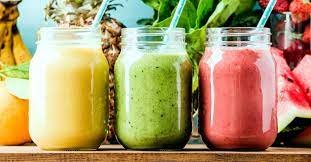
List of Detox Juices:
- Orange-Carrot Ginger
Oranges are rich sources of vitamin C and antioxidants. Beta-carotene and fibre in carrots help with digestion and weight loss. Ginger is a traditional home remedy with anti-inflammatory properties that helps with digestion, bloating, and stomach cramps.
- Lemona
Really, you don’t need an excuse to enjoy a glass of lemonade. bursting with the virtues of mint and lemon. Or you can have a glass of lemon water with honey in it.
- Cucumber Mint Detox
The best ingredients for calming an upset stomach are traditionally thought to contain mint. Additionally, mint enhances bile flow through the stomach, hastening the digestive process. This cooler, made with antioxidant-rich cucumber and lemon, provides relief from both the sweltering heat and the toxic overload.
- Pomegranate Juice
Pomegranate Juice Detox contains the goodness of pomegranate and beetroot, which are also highly valued in Ayurveda for their numerous cleansing and detoxifying properties. Your immune system is further boosted by the juice’s use of fresh aloe vera gel.
- Lemon and Mint Coconut Water
A delightful beverage that will cleanse the toxins from your liver and intestinal tract and leave you feeling rejuvenated.
- Jeera water
The simplest method you can use to detoxify your body is jeera water. It aids in weight loss and requires little effort and preparation time.
Medicinal Ways to Detoxify:

Pills and laxatives are used to detoxify your body. Tablet/Laxatives are used to treat indigestion. It effectively lessens bloating, discomfort, and pain in the abdomen.
It enhances the digestive system’s performance to promote healthy digestion. The most typical side effects include diarrhoea, bloating, stomach pain, constipation, and nausea. The majority of these are temporary and usually disappear with time. If you have any concerns about any of these side effects, talk to your doctor right away.
Side Effects of Detoxification:
- Dehydration
Some detox diets frequently include laxatives or diuretics to encourage frequent bathroom visits.
These medications are safe when prescribed by doctors and taken over a brief period of time. However, taking them for an extended period of time may cause severe dehydration.
Needing more fluids is not the only way to treat dehydration. Dehydration over time has the potential to seriously harm vital organs or trigger more severe health issues like seizures.
- Stomach issues
Many different ingredients can be used in detox pills and diets to “purge” the body of toxins. These products laxatives, supplements, and even the “helpful” bacteria they use can seriously harm your digestive system.

- Nutrient Deficiencies
Many detox diets require people to cut out particular foods that are thought to contribute to the accumulation of toxins.
Many people can easily cut out meat and dairy from their diets, but they usually also make other dietary changes to make up for the lost nutrients.
Many of these detox diets call for eliminating crucial nutrients from your diet without providing a secure replacement. If you consume a lot of detox foods, you might be deficient in important vitamins and minerals.
Some other side effects are:
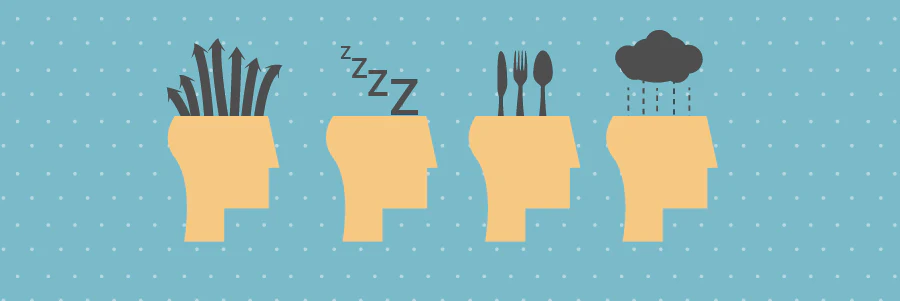
- Sleep disruptions
- Unhealthy weight loss
- electrolyte imbalance
- Eating Disorders
Giloy: Uses, benefits and side effects.
What is Giloy?
The botanical name for giloy is Tinos Pora cordifolia, or Guduchi and Amrita in Hindi. Because of its high nutritional value and alkaloids, the stem of the Giloy is thought to be particularly effective, though the root and leaves can also be used.
A Charak Samhita shloka describes giloy as one of the primary bitter-tasting herbs. It helps treat a variety of illnesses as well as the vata and kapha doshas.

Due to its reddish fruit and heart-shaped leaves, giloy is also known as Heart-leaved Moonseed.
Medicinal Properties of Giloy:
Because of its high nutritional value and the alkaloids, glycosides, steroids, and other substances it contains, the stem of the Giloy is thought to be particularly effective; however, the root and leaves can also be used.
These ingredients in Giloy are effective against a wide range of illnesses, including diabetes, cancer, neurological issues, fever, etc.
How to consume Giloy?

Giloy can be consumed in a variety of ways according to Ayurveda, including as a powder, kadha (decoction), or even juice. These days, it can also be purchased as powder or capsules. Giloy can also be used topically as a paste for skin issues.
Giloy should be taken twice daily, one teaspoon at a time. Depending on the nature of the health issue, the dose might change.
How to prepare Giloy juice?
You’ll need some clean, chopped plant branches to make Giloy juice. These chopped branches are blended with one cup of water to create a fine, liquid green paste. To create a Giloy juice, sieve this green paste right now.
Benefits of Giloy:
- Dengue fever: It is useful in managing dengue fever.
- Fever: helpful in strengthening the body’s defences against infections and the immune system. It speeds up recovery by increasing the activity of macrophages, which are cells in the body that fight both microorganisms and foreign objects.
- Hay fever: Hay fever, or allergic rhinitis, is treated with giloy to lessen the symptoms. It lessens symptoms like nasal congestion, discharge, sneezing, and itching. To combat infection, it also raises the number of leukocytes or white blood cells.
- Diabetes: Giloy may help manage diabetes by lowering blood sugar levels. Due to its antioxidant and anti-inflammatory properties, it also aids in managing diabetes-related complications like ulcers, wounds, and kidney damage.
- Liver Diseases: Using Guduchi Satwi, an Ayurvedic remedy made from Giloy, one can treat liver damage brought on by excessive alcohol consumption. It works by reducing the liver’s overall cholesterol level. Additionally, it raises levels of antioxidant enzymes (decreases free radical damage) and oxidative stress markers, improving liver function in general.
- Cancer: Due to its anti-proliferative qualities, giloy may be helpful in the treatment of breast cancer.
- Due to their anti-cancer properties, the rutin and quercetin found in Giloy inhibit breast cancer cell’s ability to proliferate and grow. Additionally, it affects how apoptotic genes are expressed and causes breast cancer cells to undergo apoptosis (cell death).
- High Cholesterol: By enhancing metabolism and removing toxins from the body that cause high cholesterol, giloy aids in the control of high cholesterol levels in the body. Its Deepan (appetiser), Pachan (digestive), and Rasayana (rejuvenating) qualities are to blame for this.
- Diarrhoea: Due to its Pachan (digestive) properties, Giloy aids in the reduction of digestion-related issues like indigestion, hyperacidity, and flatulence.
- Rheumatoid arthritis: Giloy may be helpful in the treatment of arthritis-related pain and inflammation.
- By preventing the production of pro-inflammatory cytokines, Giloy reduces inflammation associated with arthritis (molecules that promote inflammation). The immune system of the body attacks the body in auto-immune diseases, and Giloy is known to strengthen the immune system. Giloy may cause the immune system to become overstimulated when used to treat autoimmune diseases.
Side effects of Giloy:
Giloy may make the immune system more active, which could make the signs and symptoms of autoimmune conditions like rheumatoid arthritis worse. Lactating mothers are unaware of its effects. Giloy should therefore be avoided while breastfeeding to be on the safe side.

Aloe vera: Properties, uses and side effects
Aloe barbadense miller is the scientific name for aloe vera, which is a member of the Liliaceae family. Aloe vera is a combination of the Latin word vera, which means “true,” and the Arabic word alloeh, which means “shining bitter substance.” Aloe vera has been used for its therapeutic, health, beauty, and skincare benefits for ages. In dermatology, it has been applied for a number of purposes.
Maharashtra, Gujarat, Rajasthan, Tamil Nadu, and Andhra Pradesh are the locations where it is found in India. Aloe vera is also known as the miracle plant, plant of life, wand of heaven, potted physician, and heaven’s blessing. Other well-known names for aloe vera include Barbados aloe, Curacao aloe, and Indian Alces. Other names include Aloe, Ghirita, Kumari, Gawarpaltra, and Lu Hui.
Aloe vera is a plant that also contains minerals like sodium, calcium, manganese, magnesium, copper, zinc, potassium, chromium, and iron as well as vitamins A, B12, C, and E, choline, folic acid, sugars, amino acids, and sterols.
Aloe vera can be used in the following ways:
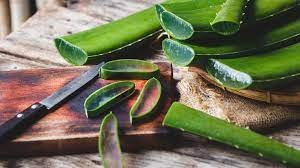
- Gel
- Lotion
- Cream
- Juice
Properties of Aloe vera:
Aloe vera has a number of qualities, including:
- It might have laxative effects.
- It might have potential as a painkiller.
- It might possess anti-fungal qualities.
- It might possess antibacterial qualities.
- It might possess antiviral qualities.
- It might demonstrate antioxidant activity.
- It might possess antiseptic qualities.
- It might possess anti-inflammatory qualities.
Benefits of Aloe vera:
Aloe vera has demonstrated potential uses against a number of health conditions due to its various properties. Below are a few potential applications for aloe vera.
- Wounds: Aloe vera may be used to treat wounds because it is well known for its ability to heal and soothe burns and other wounds. Applying aloe vera to a wound may speed up wound healing and improve tensile strength.

- Anti-ageing effects: Components of aloe vera can stop skin ageing. This might assist in reversing the effects of skin ageing. 3 Aloe vera can be applied topically to the skin to moisturise it. It might contribute to the skin becoming more elastic and smoother. Additionally, it might soften skin and close pores. To support the use of aloe vera in skin ageing, more research is required. If you have any skin-related worries, consult a dermatologist or doctor of dermatology.
- Diabetes: Many cultures worldwide use aloe vera as a traditional treatment for diabetes mellitus. Aloe vera may help with chronic hyperglycaemia (an excess of glucose in the blood), which is a symptom of diabetes mellitus and a major risk factor for heart disease, as well as with a disturbed lipid profile, according to studies done on both humans and animals. During a clinical study, it was also discovered to lower blood sugar levels in diabetes patients. Preventing gestational diabetes may be aided by it (a type of diabetes that develops during pregnancy in women). However, diabetes is a serious medical condition, so you must strictly follow the guidance and therapy prescribed by your doctor. Do not use any herbal remedies without first consulting a physician.
- Ulcers: For treating digestive disorders like ulcers, heartburn, and others, aloe vera juice may be helpful. Aloe vera extract may be able to lessen acid secretion. Aloe vera may be used for children, according to some studies. Aloe vera should not be used as a substitute for modern medical care. Herbal ulcer treatments may make the situation worse.

- Inflammation: Pain, swelling, redness, and heat are some of the characteristics of inflammation that slow the healing process.
- Detox: Aloe vera juice might be a great all-natural detoxifier. Our bodies need regular cleaning because of the bad food we eat, the pollution, and the stress in our lives. Minerals, vitamins, and trace elements in aloe vera juice might help our bodies cope with the stresses of daily life. Before using herbal remedies for health reasons, you should consult your healthcare provider.
Although there are studies demonstrating the benefits of aloe vera in a variety of conditions, these are insufficient, and more research is required to determine the full extent of aloe vera’s health benefits for people.
These are some of the benefits of aloe vera for hair:
- Strengthens hair: Numerous minerals and active ingredients found in aloe vera can strengthen your hair. Along with fatty and amino acids, it is a good source of vitamins A, B12, C, and E. These contribute to the health of hair follicles.
- Regulates greasy hair: Aloe vera has enzymes that break down fats, so it removes any excess oil from your hair (sebum).
- Soothes a scratchy scalp: A common inflammatory skin condition that affects your scalp is seborrheic dermatitis. Dandruff, red skin, and scaly patches are the results.

- Protects from UV rays: UV radiation from the sun can be protected from by drinking fresh aloe vera juice. UV rays can make your hair rough and less elastic, causing it to lose its shine and colour and break. The type of hair determines how much UV protection is provided.
- Hair Growth: Although some claim that aloe vera promotes hair growth, this is not supported by science. But scientists think that aloenin, a chemical in the plant, is a key element in encouraging hair growth, as seen in people with the hair-loss condition known as alopecia. It has been used to strengthen hair, reduce breakage, and promote hair growth.
Side effects of Aloe vera:
The following are side effects related to aloe vera use.
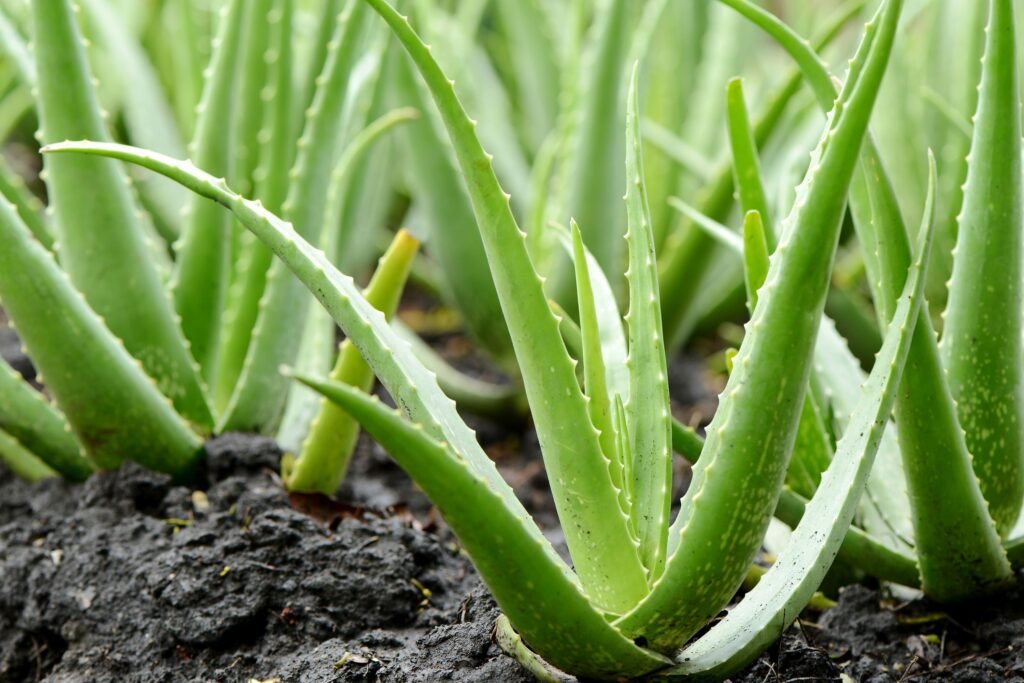
Diarrhoea, abdominal pain, hepatitis, red urine, irregular heartbeat, and worsening constipation are some of the side effects of oral use. Electrolyte imbalances may result from diuretic effects.
Aloe vera usage for an extended period of time has reportedly been linked to an increased risk of colorectal cancer.
Burning, redness, stinging, and in rare cases generalised dermatitis (skin inflammation) in sensitive individuals are side effects of topical use. It is recommended to apply aloe vera to a small area in order to test for any potential allergic reaction.
You should discuss any potential risks and restrictions with your doctor before using aloe vera or other herbal remedies. You’ll be able to avoid unpleasant side effects.
Wheatgrass: Uses, Benefits and Side Effects
One type of grass is wheatgrass. Medicine is created using the plant’s above-ground components, roots, and rhizomes. A common way to get nutrients is by using wheatgrass. Iron, calcium, magnesium, vitamin E, vitamin C, vitamin A, and amino acids are all present.
Although there is little solid scientific evidence to support these claims, people use wheatgrass to treat a variety of ailments, including high cholesterol, an inflammatory bowel disease known as ulcerative colitis, a blood disorder called beta-thalassemia, and many others.
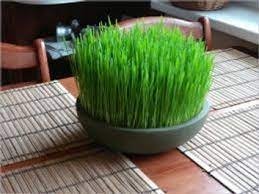
A well-liked healthy beverage is wheatgrass juice. Only when taken fresh and right away after mixing, on an empty stomach, is it believed to have health benefits. However, there is no research to back this up.
Chemicals in wheatgrass may be antioxidant and anti-inflammatory (anti-swelling) in nature. For this reason, some individuals speculate that it may be beneficial for ailments like inflammatory bowel disease. Additionally, it contains a substance that may help treat bacterial infections.
Benefits of Wheatgrass:
- A blood condition that lowers the amount of the protein haemoglobin in the blood (beta-thalassemia). According to preliminary research, children with beta-thalassemia may experience fewer blood transfusions if they consume 100 mL of wheatgrass juice daily for 18 months or take tablets containing 1–4 grammes of wheatgrass every day for 12 months. However, other preliminary research suggests that taking tablets containing 100–200 mg/kg of wheatgrass daily for a year does not prevent beta-thalassemia in children and adults from necessitating blood transfusions.
- Heel Pain: Early research indicates that applying a wheatgrass cream twice daily for six weeks to the bottom of the feet does not alleviate heel pain.
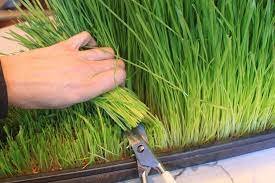
- High Cholesterol: According to preliminary research, taking wheatgrass powder in a capsule every day for 10 weeks can slightly lower total cholesterol and triglyceride cholesterol levels in women with high cholesterol.
- A kind of inflammatory bowel condition (ulcerative colitis): Early studies suggest that freshly extracted wheatgrass juice may lessen the severity of rectal bleeding in individuals with this condition as well as the overall disease activity.
- Anaemia.
- Cancer.
- Diabetes.
- High blood pressure.
- Preventing infections.
- Preventing tooth decay.
- Removing drugs, metals, toxins, and cancer-causing substances from the body.
- Wound healing.
- Other conditions.
Side effects of Wheatgrass:
Only buy wheatgrass from a dependable source, like a reputable health store. Make sure the plants were grown and cleaned properly by speaking with a colleague. This makes it more likely that dangerous bacteria and mould won’t grow.
Start out taking a small amount of wheatgrass at first, then gradually increase it until you are taking the recommended amount. This will aid in assisting your body’s digestion of wheatgrass.
An average liquid dose is between 1 and 4 ounces or roughly 2 shots. Typically, 3 to 5 grammes, or about 1 teaspoon, of powder are taken. After taking wheatgrass, sipping an 8-ounce cup of water can help lower your risk of experiencing side effects.
When consumed orally, wheatgrass is LIKELY SAFE when consumed in food portions. For the majority of adults, it is POSSIBLY SAFE when taken in therapeutic doses for up to 18 months.
When applied topically, wheatgrass is POSSIBLY SAFE for up to 6 weeks when used as a cream.
Possible side effects:
- Fever
- Nausea
- Headache
- Constipation
- and upset stomach

Once your body has adapted to the wheatgrass, these symptoms usually go away in 2 weeks. If you are expecting, nursing, or breastfeeding, avoid taking wheatgrass. Some people, especially those who are allergic to wheat or grass, are susceptible to allergic reactions. If you have a blood disorder, celiac disease, or gluten intolerance, it might also have a different impact on you.
